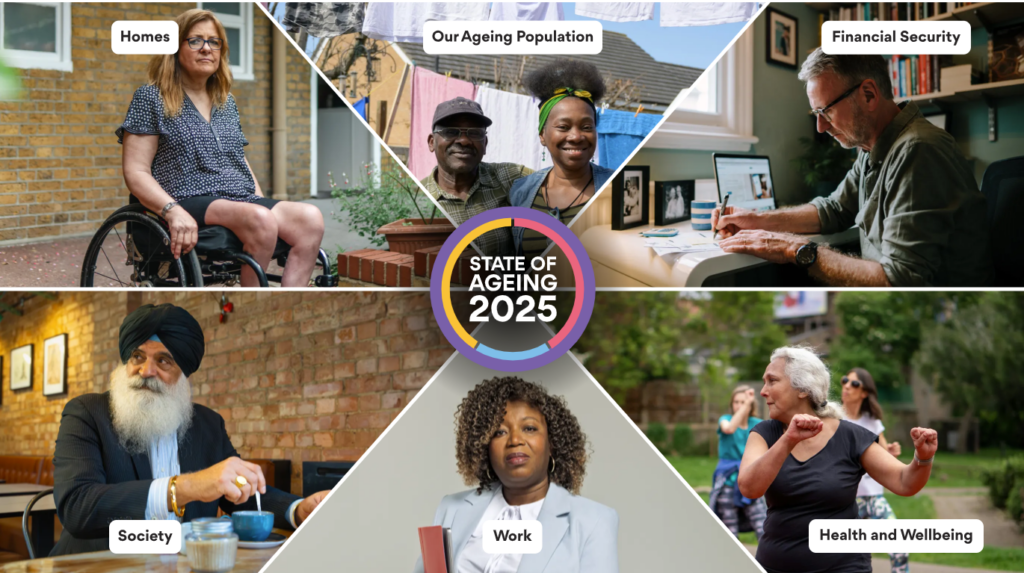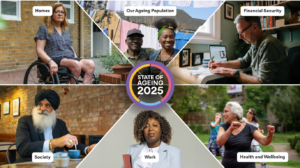The latest research by The Centre for Aging better, State of Ageing 2025 report finds that living in the poorest parts of England can cost you almost five years of your life.
We will be focussing on, and discussing the report findings in more detail over the coming weeks and months but you can click on the button below to read a detailed summary.
Society
Throughout this report our research highlights the regional disparities in people’s experiences of ageing and shows that life expectancy, health, the employment age gap and the quality of our homes are likely to be worse in what are referred to as ‘deprived places’ (which tend to be in the North of England and urban in nature). But even in ‘deprived areas’ a sense of community can – and often does – flourish, as we heard from people living in Middlesbrough and Knowsley.
Older volunteers play an integral role in supporting local communities, and people aged 65 to 74 are consistently the most likely to volunteer (although recent years have seen an overall decline). Rates of informal volunteering, such as doing shopping for a neighbour, are consistent across places nationally, whatever their level of deprivation. However, looking at people of all ages, you are more than twice as likely to volunteer as part of a group, club or organisation (that is, formal volunteering) if you live in one of the least deprived areas of England compared with one of the most deprived areas.
Social isolation and loneliness can be caused by people being unable to leave their homes – perhaps due to accessibility issues in their homes or communities – and this leads to worse health outcomes.
Living alone is also a risk factor for social isolation. In 2023, 4.2 million people aged 65 and over lived alone. Although more older women than older men live alone currently, the number of older men living alone is increasing fastest.
Our place in our communities can also be affected by ageism. Our Effects of Ageism survey found that the most common consequences of self-directed ageism – when a person internalises ageism due to repeated exposure to ageist messages and, as a result, changes their own thinking and behaviour – included not taking part in a social activity (34% of people aged 50 and over), avoiding or limiting physical activity (31%), not going to certain places (24%) and not seeking help for a health complaint (24%)45. Clearly these actions run the risk of exacerbating social isolation and can also have a detrimental impact on our health.
There is digital isolation too. The digital world remains a challenge for many, and older people’s internet use is not keeping up with increased internet access. The gap in internet use between people aged 55 to 64 and those aged 65 and over is widening. The percentage of people aged 55 to 64 who don’t use the internet at home has fallen by four percentage points in the past year, from 12% to 8%46. However, the percentage of people aged 65 and over has only fallen by two percentage points (from 31% to 29%), despite access to the internet for this age group rising from 75% to 81%.
The evidence is clear: where people are supported to age well, with age-friendly information and communication (including digital inclusion), accessible shops and facilities, green spaces, transport, and health and care services, they experience strong social and civic connections in the communities in which they live, with profound implications for their health and wellbeing.
What needs to happen...
National government: Provide every local authority with the resources it needs to become an Age-friendly Community Local government: Respond to local demographic change and create local communities where older people can be active, involved and shape the places they live in.
Everyone: Organisations to put in place effective policies to tackle ageism and individuals to challenge ageist behaviour. As our national campaign Age Without Limits highlights, we want everyone, both individuals and organisations, to notice and to challenge ageism, which has an impact on all our lives.



